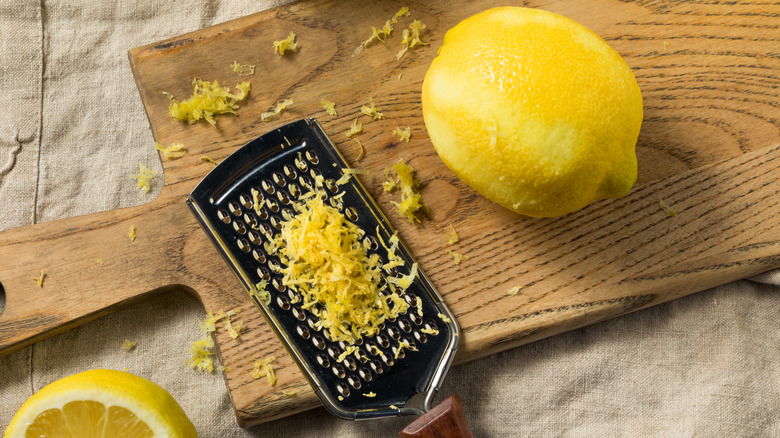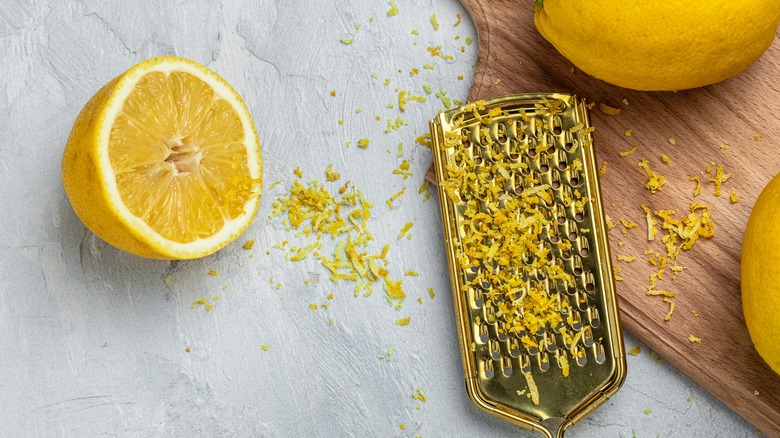Why It Pays To Zest Citrus Upside Down
When it comes to adding a pop of flavor to a recipe, zest from a citrus fruit is definitely a good option. BBC Good Food explains, zest is the brightly colored outer rind of fruits like lemons, grapefruits, limes, and oranges. The site goes on to describe zest as both flavorful and a delight for the olfactory. But zest is so much more. It can brighten a dish in all the right ways, leaving our taste buds wanting more. There are plenty of recipes for cooking with citrus zest that you should have in your back pocket to impress future in-laws or help satiate a hungry crowd, including bread pudding where orange zest is the must-have ingredient.
But, naturally, zesting is not without its culinary perils and hazards. Per Home Cook Basics, plenty of zesters have lived to tell the tale of cut-up fingers, especially if they were using a box grater. And then there's the pith, which as Cook's Illustrated points out is not actually "bitter" as is the common misconception; however, it can turn so when the zest and pith are rubbed together, so proceed with caution. Of course, when you zest a citrus fruit, you may wonder how much zest you are actually grating into a dish, which is why it pays to zest your oranges and lemons upside down.
Zest with a different vantage point
What exactly does that mean? According to the Auguste Escoffier School of Culinary Arts, if you want to be a more proficient zester you should flip your grater over so the rough edge is on the bottom and softer edge collects all those soft, colorful, beautiful peel shavings as you move the fruit back and forth. But don't be overzealous and move it back and forth too many times or you will wind up with a lot of pith mixed in the zest. Instead, in a video demonstration, a student shows that you just want to use this motion once before rotating the fruit to hit a new spot.
The cooking experts go on to reveal most people zest incorrectly, but that using this method will give you greater control over how much zest actually makes it into your recipes. What's the best type of kitchen tool to use when zesting a citrus fruit? Home Cook Basics recommends using a microplane because they help avoid getting the pith mixed in with your zest, and it works best with this prescribed tip for managing the amount of zest you get from your lemons and limes.

